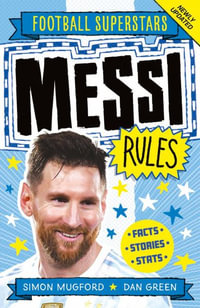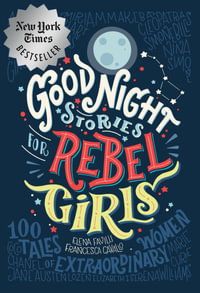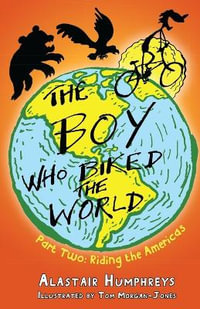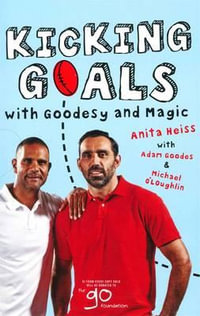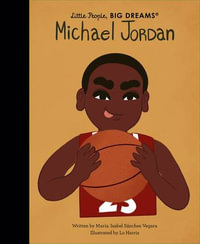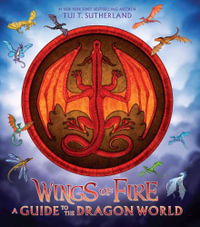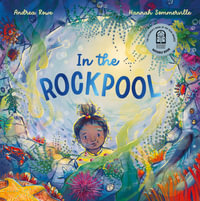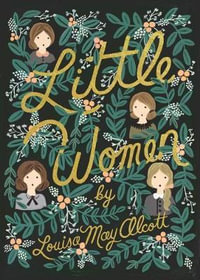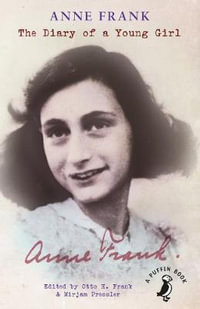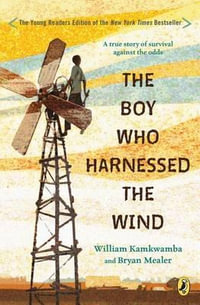A graphic novel in four parts, My Beijing includes stories about Yu'er, her Grampa and the 'Everyday Wonder' of their lives in one of Beijing's hutongs, the traditional neighborhoods for which the city is known.
Yu'er desperately wants to learn how to swim (her name means Fish Child, after all) but, because of an unnamed disability that requires her to use a cane, no swim clubs will allow her membership. 'People think I'm different, ' she says sadly to Grampa. He wheels her away in a cart attached to his bike, exclaiming, 'Oh, who cares what they think!'--he has an idea. The next page shows Yu'er diving deep down underwater; the next one depicts her dangling from a tree, hooked up to a pulley system with Grampa at the other end. From the ground, Grampa gives lessons in controlling breathing and finding balance: 'Just imagine you're in the water. . . . Do you feel like you're floating?' Yu'er loves her new 'pool' and swims in the tree until suddenly she's flying up through the sky, swimming out of her neighborhood and into the city. 'Go, my little Yu'er! Go!'
Each of the four stories has a wondrous turn that takes the reader from the simple, gentle mundanity of the everyday lives of Yu'er and Grampa into the slightly, but still friendly, surreal. Whether she makes a new friend who is actually her Grampa as a boy or she's mailing a letter into the past, Yu'er slips gracefully (and without knowledge) in and out of time in a way that leads to pleasant surprises rather than shockers. Nie Jun's illustrations are lush, the figures expressive and Beijing itself captivating in its detail. One hopes that this first work of Nie Jun's to be translated into English is the first of many.
Discover: Yu'er and Grampa experience everyday (and extraordinary) wonder in Nie Jun's My Beijing, a graphic novel for middle graders.--Shelf Awareness
-- "Website"
A young Chinese girl and her grandpa navigate life's challenges and joys in a small neighborhood of Beijing. In this graphic-short story collection, the author introduces readers to Yu'er, a girl with an unspecified physical disability that limits her mobility, and her loving grandfather. The first story opens with her dream of becoming a champion swimmer and a belief strong enough to carry her above her naysayers. From there, readers meet a boy who helps her fight off bullies, encounter the fantastical properties of an old mailbox, and finish by witnessing Yu'er's reconciliation with a grumpy neighbor. Whimsical and sweet, this will remind readers of animated movies such as My Neighbor Totoro and Kiki's Delivery Service. With no fancy fight scenes or action shots, this is a slow and quiet delivery presented in a bright and warm palette of watercolors. Scenes depicted are plangent and sweet evocations of childhood, as in the 'Bug Paradise' retreat Yu'er's new friend shares with her and the story her retired-letter-carrier grandpa tells her via his stamp collection. The few cultural and translation footnotes help readers who may be confused by or unfamiliar with certain Chinese terminology or history. Featuring family and friendships, this title is recommended for curious young readers looking for some magic in the everyday.--Kirkus Reviews
-- "Journal"
Four slice-of-life stories about a young girl and her grandfather in a hutong neighborhood of Beijing make up this quiet graphic novel. In the first, Yu'er, who has limited use of one of her legs, dreams of swimming in the Special Olympics, but none of the pools will let her in to train, so her grandfather devises a way to swim without water. The middle two talks are steeped in magical realism. In one, Yu'er meets a boy who protects her from bullies and takes her to a one-of-a-kind concert. In the other, hearing about her grandparents' courtship leads Yu'er to write a magical letter. In the final entry, Yu'er studies painting with a grumpy neighbor who laments his inability to act on his dreams when he was younger. Delicate full-color watercolors add to the gentle, dreamy atmosphere of the neighborhood as Yu'er, her friends, and readers discover the simple magic and wonder in everyday life. The translation occasionally hits and odd note but does not distract from the warm tone. VERDICT Recommended for most graphic novel collections.--School Library Journal
-- "Journal"
In the first of four stories in this graphic novel for young readers, Yu'er, who walks with difficulty, has a big dream: to compete in the Special Olympics as a swimmer. Alas, her application to take a swim class is rejected because of her disability. Fear not: Grampa sets up a contraption composed of belts, hooks, and pulleys, dangling Yu'er from the tree in the communal courtyard of their Beijing home, and teaches her himself. Panels depicting Yu'er's fantasy of swimming gracefully through clear blue water alternate with those revealing the tough reality of her midair training sessions. The story ends with Yu'er's dreamscape seeping into the real world as she swims high in the air through the neighborhood for all to admire. Strong beginnings, heartwarming relationships, moments of levity, and magical elements also mark the remaining three vignettes, giving these inventive stories a folkloric quality. The soft earth-toned and fine-lined watercolor panel art seems quiet and contemplative at first glance. However, accompanying this subdued palette are dynamic perspectives and compositions that give each story a lively energy. The book's original Chinese title, Fairy Tales of Old Streets, hints at the author's longing for a vanishing lifestyle (communal living in Hutongs, or narrow alleyways, is a rare experience in modern Beijing). But contemporary young readers will easily relate to Yu'er's longing to be part of a loving community and caring family, and identify with her good humor and grit in facing life's obstacles.--The Horn Book Magazine
-- "Journal"
This delectable graphic story collection gives a taste of the everyday life of kids in China, kicked up with a clever time-travel element. A girl named Yu'er, who has a disability that limits her walking, and the grandfather who cares for her live simply, but their days are filled with both resourcefulness and amazement. The stories move gracefully between reality and fantasy, a bit like Miyazaki movies, but sweeter.--The New York Times Book Review
-- "Newspaper"
When young Yu'er laments, 'People think I'm different, ' her grandfather's immediate response, 'Oh, who cares what they think!' sets her free to be just that--and more. She's different because she's physically challenged, but Grampa ensures her mobility via push cart, wooden chair-on-wheels, or even carried on his back. Buoyed by Grampa's playfully devoted support, Yu'er's adventures are magically empowering. Four such endeavors are including here: swimming without water in hopeful preparation for the Special Olympics in 'Yu'er's Dream'; visiting 'Bug Paradise' with a protective new friend; sending 'The Letter' from the present to the past; and nurturing artistic expression with the neighborhood grouch in 'Kids at Heart.' Set in a Beijing hutong--a traditional neighborhood of courtyard houses and alleyways--Yu'er and Grampa make ideal guides. Gauvin's buoyantly translated speech bubbles exude youthful excitement and energy, with occasional explanatory asterisks that explain how Yu'er's name translates to 'fish girl, ' or the literary significance of the Ming Dynastic classic, Journey to the West. Presented in sumptuous full color, Jun's exquisite graphics--from perfect realism (a cancelled stamp) to comical specificity (Grampa's exaggerated backside) to the 'natural simplicity' of Yu'er's own drawings--offer nonstop merriment and whimsical delight.--starred, Booklist
-- "Journal"
Yu'er spends much of her time hanging out with her grandfather in their hutong, the narrow street formed by the walls of private residences. When Grampa isn't dozing, he's a bottomless well of droll activities and family stories, and when he is dozing, there are always kids around, supplying the material for four short stories told in graphic-novel format. In the first, Yu'er, who relies on her crutch and Grampa's bicycle for mobility, hopes to enter the Special Olympics swim and diving competition, but with no pool to practice in, Grampa rigs a harness in a tree for her to develop her skills. In the second, a new kid in the neighborhood saves her from bullies and introduces her to a bug concert in a charming hideaway. Next comes Grampa's story of how a stamp collection and his former job as mailman led him to woo Gramma. Finally, a grouchy painter of Grampa's acquaintance recognizes Yu'er's talent for painting. Each story incorporates an element of dream or magic that elevates it from the quotidian to the extraordinary. Yu'er's practice harness gives her flight; the friendly kid with the musical bugs is Grampa in his youth; Yu'er sends her first letter to Gramma, who receives it as a young woman; and as the painter works with his easel beside Yu'er's, he brings joy back to his own spirit and that of his wife. Each frame of sequential art is a small gem of delicate line and watercolor painting, with Yu'er's striped bathing cap centering her in the action, the occasional plumber-style exposed butt providing comic relief, and the exterior and interior scenes transporting readers of this imported title into a cozy, comfortable new setting.--The Bulletin of the Center for Children's Books
-- "Journal"


